Raymii.org

אֶשָּׂא עֵינַי אֶל־הֶהָרִים מֵאַיִן יָבֹא עֶזְרִֽי׃Home | About | All pages | Cluster Status | RSS Feed
Using a 1965 Dutch Rotary Phone via VoIP (T65) in 2024
Published: 14-06-2024 04:00 | Author: Remy van Elst | Text only version of this article
❗ This post is over one years old. It may no longer be up to date. Opinions may have changed.
Table of Contents
Recently I was gifted a T65 rotary telephone. This was the standard telephone in The Netherlands in the seventies and eighties. I remember my parents having one as well. Because this phone does not use DTMF but pulse dialing it does not work with modern equipment, like the built in telephony / voip server on my FritzBox router. Using a hardware converter it is possible to convert pulse dialing to DTMF and to use your rotary phone again. This page covers two such devices, the DialGizmo and the GrandStream HT502 and a more homebrew approach.
My collection now consists of two devices. The green one is modified for
tweepuntschakeling:
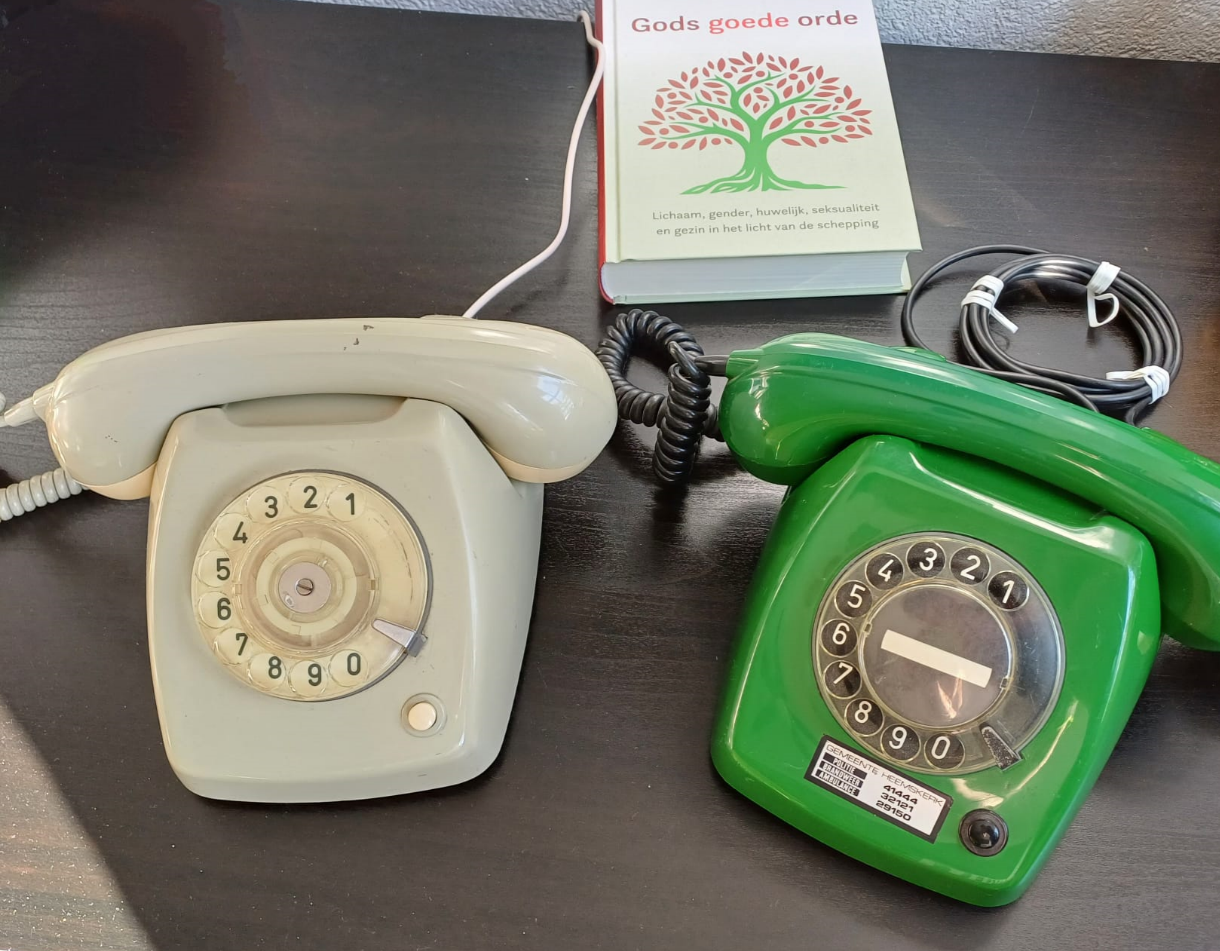
The T65 had to be rented from Dutch PTT by the subscriber for a monthly fee of for Fl. 2.50 (EUR 1,13). Today telephones in the Netherlands no longer need to be rented; it is allowed to connect any telephone as long as it is approved.
The T stands for (tafelmodel) tabletop device and the 65 for the year of its introduction (1965). The German firm, Krone, designed the case. There is some talk of plagiarism, as the T65 looks very much like the new phone of the German Bundespost, the Fe Ap 61 (1961),
These devices were made in many colours and some had extra features, like a lock, speakerphone, extra listener device and some even were like a little telephone exchange. The T65 was produced by German Krone (located in Germany) and under license by Dutch Ericsson (located in Rijen the Netherlands), NSEM (Nederlandse Standard Electric Maatschappij, located in The Hague the Netherlands) and HEEMAF (Hengelosche Electrische En Mechanische Apparaten Fabriek, located in Hengelo the Netherlands).
The T65 later in its lifetime was also available with buttons that produce DTMF:
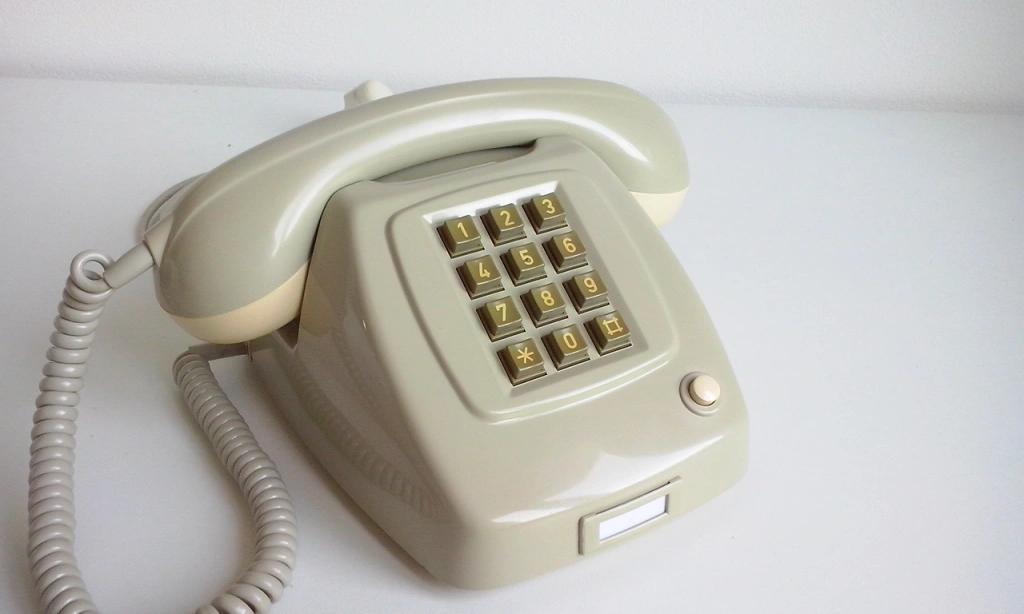
The T65 type telephones have a special provision that makes it possible to connect two T65 type telephones to a public telephone line in a special manner. In Dutch it's called a "tweeling' or "tweepuntschakeling" which translates into "two point" or "twin connection".
This configuration consists of two T65 type telephones connected together with nothing more than copper wire, both phones ring on incoming calls and when a call is answered with one T65 the other one is excluded from the conversation. In English it's called "extensions in parallel with privacy arrangement".
The rotary dialing is what makes the old phones fun, I don't like these newer models. They are easier to use however with modern VoIP.
If you hook up your device to a telephone server (like a Fritz!Box or your provider modem/router) you are probably able to be called. It should handle incoming calls without problems, it should ring and picking up should result in having a regular call. At least that was the case with my setup.
My setup
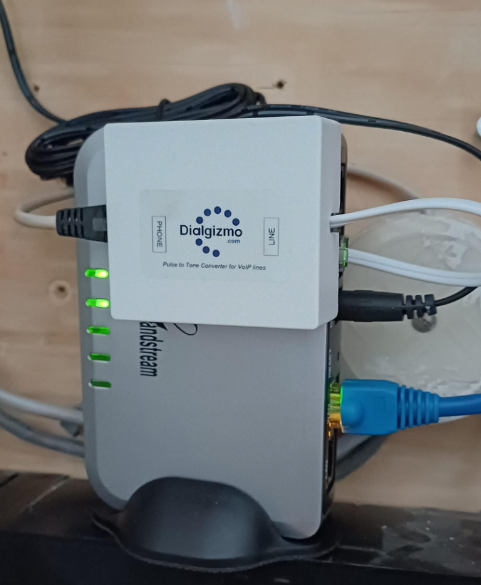
I'm using a GandStream HT502 with a DialGizmo in between. The HT502 support pulse dialing but when buying that device I was not aware of that. I used to use a Fritz!Box with the DialGizmo, but the T65 phone had to move to a location where only wired network was available, no RJ-11 phone connection, which is why the HT502 replaced the Fritz!Box.
The VoIP credentials are from my ISP, they must provide those under recent
regulations that allow consumers to choose their own internet modem.
Either enter those in the Fritz!Box or the GrandStream ATA
(voip.t-mobilethuis.nl, username and password) and bob's your uncle.
No other setup or firewall rules required.
I have also experimented with an Asterisk server to provide an internal SIP network.
The HT502 supports remote syslog, so my local ElasticSearch/Logstash/Kibana (ELK) stack sends me an alert if there are any missed calls. The Fritz!Box did that but since that is no longer used, the local ELK stack came in handy.
You can set up the HT502 to send its SIP stack log messages to syslog as well as DEBUG level logs. If you're wondering, this is the log message I'm triggering an alert on incoming calls:
startRing with CID, Attempting to deliver CID +31612345678 on port 0
For outgoing calls:
run, Dialing 0612345678
Two other log messages of interest are these:
processEvent, Phone at port 0 is on-hook
processEvent, Phone at port 0 is off-hook
If you want to see each individual number dialed this is another log line:
dialPlanEngine, DialPlan: 0x4 061 line: 0
dialPlanEngine, DialPlan: 0x4 0612 line: 0
dialPlanEngine, DialPlan: 0x4 06123 line: 0
The rest of this article will go over the different options to use a rotary dial phone with VoIP.
Fritz!Box
My home router is a Fritz!Box made by AVM. For the last 13 years I had a FRITZ!Box 7360 (released in 2012), but that old fart recently decided to randomly die. I've tried replacing the power supply but that didn't help, the device was just dead. I've replaced it with a (second hand but new in box) Fritz!Box 4040.
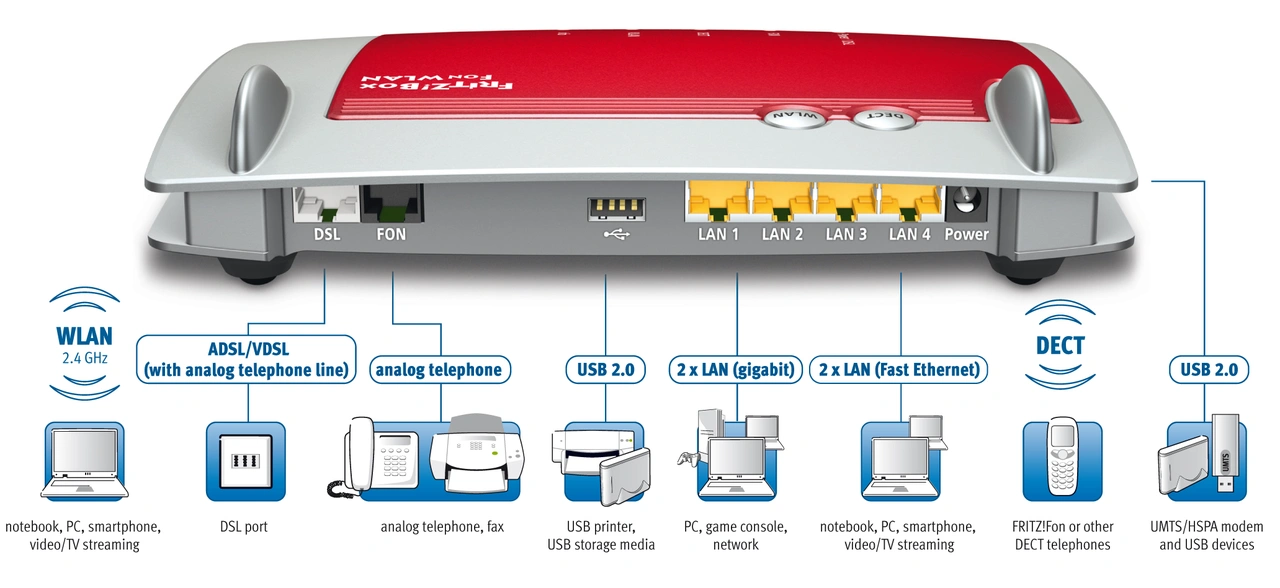
I like the Fritz!Box devices. I have custom firmware on mine, freetz-ng which allowed me to keep this old model up to date and even have WireGuard VPN on this old model. AVM does not support that in these old models, only IPSEC. The 4040 did get an update to support WireGuard, and that device is from 2016, which is nice from AVM.
A small rant about Android. IPSEC cannot be setup in Android 12 and up anymore, but if you upgrade a device from 11 to 12 your IPSEC VPN still works (so it's bull crap to not support it in Android 12 anymore).
This old device should support pulse dialing, but it did not work with mine. Might be the custom firmware, might be AVM dropping support in later versions, I'm not sure.
With the DialGizmo in between, the T65 works flawlessly with the Fritz!Box, both the 7360 and the 4040.
VoIP configuration in the Fritz!Box is easy, the web interface is clear and setup "just works".
DialGizmo
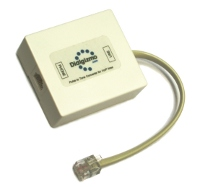
The DialGizmo
converts pulse to DTMF without requiring external power. It sits between
your telephone and VoIP device. The DialGizmo also provides a few quality of
life features like redialing the last number and support for * and #,
which my rotary phone does not have.
I bought one, list price at the time of writing is USD 39.95. Shipping took about two weeks from Australia to The Netherlands. Setup was plug and play, nothing more required. You can audibly hear the device converting pulse to DTMF.
If your rotary phone has a different numbering scheme (number ordering
1-2-3-4-5-6-7-8-9-0 is what mine has) the DialGizmo also supports that, and
many more options.
Customer support is also fast. I emailed them with some questions and they responded within a day with correct and helpful answers.
GrandStream HT502
The GrandStream HandyTone 502 is an ATA / FXS (analogue telephone adapter / foreign exchange station) device which was available from 2006 up to 2018. I got mine new (old stock I suppose) from a Belgian seller on bol.com (Bol is the Dutch equivalent of Amazon) for EUR 30 including shipping.
Newer models (like the HT802) are also available but those were more expensive. When buying this device I wasn't aware that the HT502 was so old and could still use pulse dialing.
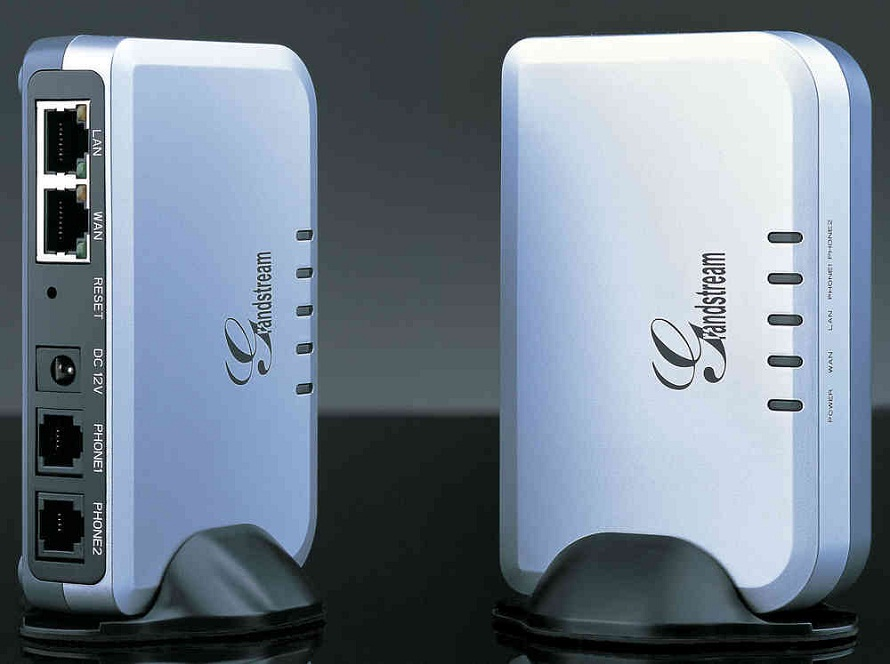
It does not advertise support for pulse dialing anywhere, neither manual nor other sources I found, but it does support pulse dialing. This site has some more info regarding syslog debugging and in-call pulse-tone to DTMF processing and here is some more info on the device.
The web interface only works on the LAN interface (quite secure for such an old device) and looks old, but is functional:
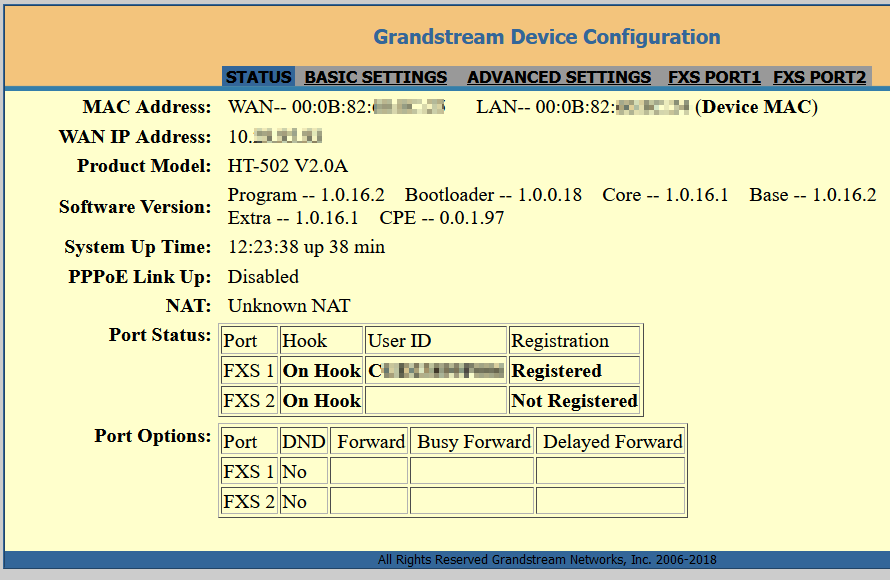
Mine came out of the box with the following factory software versions:
Program -- 1.0.11.3 Bootloader -- 1.0.0.18 Core -- 1.0.11.1 Base -- 1.0.11.3
Extra -- 1.0.11.1 CPE -- 1.0.1.42
After the latest firmware upgrade available:
Program -- 1.0.16.2 Bootloader -- 1.0.0.18 Core -- 1.0.16.1 Base -- 1.0.16.2
Extra -- 1.0.16.1 CPE -- 0.0.1.97
GrandStream still have an active firmware update server for this device, although the latest firmware is from 2018.
There is a difference in bell ringing tone between the HT502 and the Fritz!Box. The HT502 rings the bell longer and more intense than the Fritz!Box.
As opposed to the Fritz!Box, VoIP configuration in the web interface is arcane and difficult. It took me multiple attempts to get things set up and running. There are over 9000 configuration options in the web interface, not simple like the Fritz!Box, where you enter your credentials and that's it. No, this device allows you to configure everything and it quite possible can also make you a cup of coffee, as complex as the interface and configuration is.
PicBasic 141101 pulse to tone converter
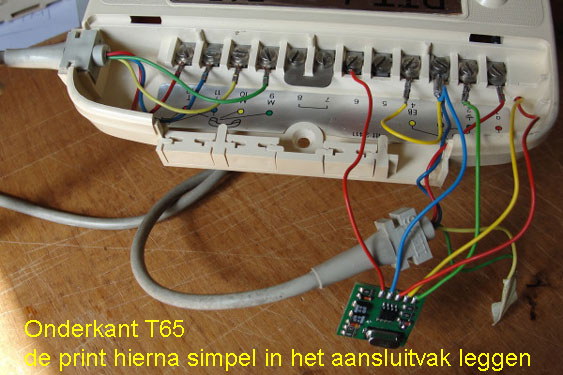
A more homebrew project is the PicBasic 141101 pulse to tone converter.
It's a small PCB that you build in to your T65 handset which provides mostly
the same functionality as the DialGizmo. A bit cheaper and for me even
cheaper due to the creator being in The Netherlands, so shipping is much less
than the DialGizmo. List price as of writing is EUR 20 for the basic version
and EUR 30 for the extended version which supports # and *.
I decided not to buy this device due to having to mess with the internals of the T65 phone. It would be easy for me to do but I'd rather not break stuff in such an old device. Comparing it with the DialGizmo, the latter being plug an play and re-usable for other devices, the extra cost and shipping time was worth it for me.
Due to the PicBasic website having an annoying redirect to force frames I have archived the relevant pages with the SingleFile Firefox extension.
- Extra informatie over de 141101 pulse to tone converter van picbasic.nl
- Puls naar toon omvormer (Pulse-to-tone converter)
If you're happy to fiddle around with your rotary phone or don't want high shipping cost from Australia then this seems to be a good option.
If anyone is aware of an open source option or something based on an Arduino or ESP32 please send me a message.
Tags: ata , avm , blog , dialgizmo , fritzbox , fxs , grandstream , hardware , pbx , pulse-dialing , rotary-phone , t65 , voip